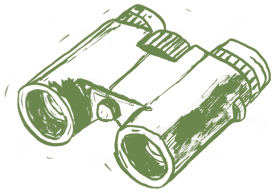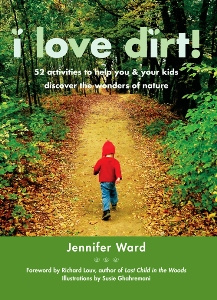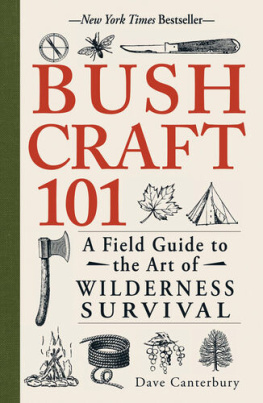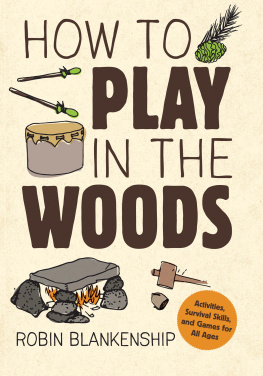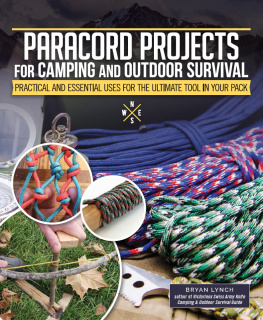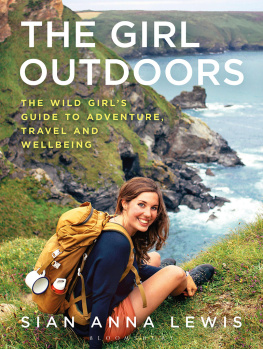Contents
Guide
50 Things to Do in the Wild
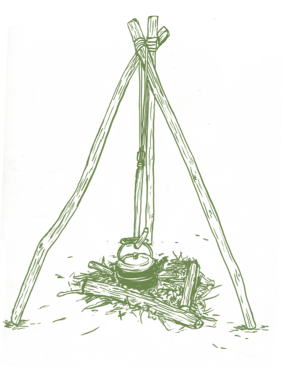
50 Things to Do in the Wild
Richard Skrein
Illustrations by Maria Nilsson


Contents

Introduction
This book is for you. It is for those of you who rarely head out into the natural world but want to know more. This book is also for those who get out there as much as they can and are keen to hone their skills, or for people like myself who work and spend much of their lives in the outdoors. There is always more to learn and this book includes tips and ideas for everyone.
But why dedicate your precious time to trying these 50 things to do in the wild? One important benefit of life in the open air is disconnection. We live in an age where almost all of us are glued to screens, addicted to and ruled by technology. Work emails, social media chatter, news platforms it can all get very noisy. That is why we need to quieten the chaos around us, disconnect from the wires and devices and feel the peace, majesty and space of a clifftop view or a clearing in the forest.
Even more significant than disconnection, spending time in the outdoors is about connection. The skills in these pages have many names survival, bushcraft, forest school, mindfulness but at its heart it is simply about connection with nature. Do not forget that we are a part of the natural world; we are animals, made of billion-year-old carbon we are stardust.
As a population, we have a desperate need to reconnect with the natural world. Now more than ever. Years of deforestation, heavy industry and monoculture farming have degraded our soil, decimated biodiversity and polluted our air and oceans to dangerous levels.
While governments and multinationals have been slow to respond, as individuals and communities we must believe we have the power to effect change. Every day I hear of wise and wonderful schemes to regenerate the natural environment in our urban and rural landscapes. It is time we rewild ourselves, rewild our children and so, rewild our future. I hope the pages of this book will help you rediscover your wild side!
Time spent in the natural world also connects us to those around us. Try some of the activities I suggest in this book with your loved ones time spent together working as a team in the great outdoors bonds a community like nothing else. You may well create some great memories and stories along the way.
Finally, you may find that these activities give you a chance to connect with yourself. Give yourself some space and time out there. Listen to your thoughts. Get in touch with something very ancient.
Beyond these noble aims, really the whole point of these 50 things to do in the wild is that they are such fun. I hope you have as much fun as I do out there. Lets get wild!
As well as enjoying your time in the wild, always ensure that you strive to minimize the impact of your activities by disposing of litter, using marked trails and camping on durable surfaces, taking the utmost care when collecting wood and making fires, and conserving habitats and wildlife. We are guests out there!

Equipment
In this section is a selection of things that you may want to take with you for some of your outdoor adventures. It is not intended as an exhaustive checklist, but will be useful as many of these items are referenced later on in the book. As well as taking the right equipment with you on a trip, always ensure you plan ahead and are prepared for any eventuality.
This is not a survival bag, packed to help you live in the wilderness for an extended period, and nor is it specifically designed for overnight stays. For this reason, it is a lighter pack with the materials you would need to enjoy the activities suggested in these pages.
Information on suppliers is detailed in .

Water bottle
Stay hydrated! I try to keep at least 2 litres (3 pints) of water with me on trips out into the wild. Some water bottles now come with their own in-built water filters, which can be very helpful for longer trips to isolated areas. Tap to read about filtering and purifying water using natural materials.
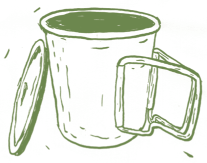
Cup
I recommend an uncoated, steel mug. You can cook and boil water in it, as well as eat and drink out of it. This is the only item in my kit I try not to share! If camping out for a while or cooking for a group, youll need pots, pans, plates and cutlery. However, if it is just you, I find that just a steel mug and a spoon can do it all.
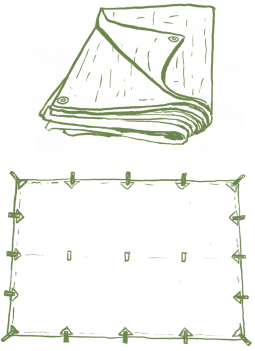
Tarps
In the tarp (tarpaulin) structures in this book, I refer to tarps with loops on the outer edges and middle to which you can attach your cordage. These are much the best tarps for making shelters, but there are projects such as making a , where a simple oilcloth or plastic tarpaulin with round eyelets around the edges is also useful. These cheap tarps are also good for using on the ground.

Firesteels
This is by far the lightest and most reliable bit of kit for fire lighting. See for more information on these and other fire-lighting methods . You may also want to carry a lighter!
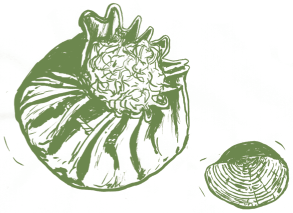
Tinder pouch
A tinder pouch is a convenient place to store and dry the tinder you have collected but is also a very pleasing object in itself. If you buy or make one of these, you are likely to grow to love it!

Head torch
Its always worth being prepared to stay out after dark or at dusk you may not want to head home yet or an emergency situation may arise
Head torches are small, lightweight and if you use one with a retractable wire cord as I do, you can wear it on your wrist too.
